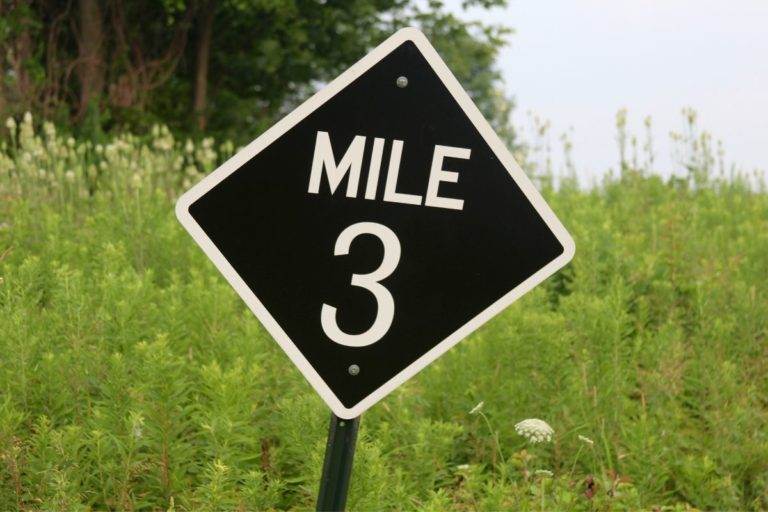How To Fix Running Form? Correct Your Running Form for Better Results

When you begin running your first thought may be to strap on your trainers and hit the pavement. Just see how far you can go before your lungs are on fire and your knees give way.
But this could be doing more harm than good. And potentially result in an accident or injury. When it comes to any form of running there is a proper form to be learned.
- Avoid overstriding: Maintain a natural stride length where your foot lands underneath your body, not too far in front.
- Beware heel striking: Focus on landing with a midfoot or forefoot strike instead of heel striking to reduce joint impact and stress.
- Pay attention to your posture: Keep yourself upright and lean forward a bit to optimize your form and breathing mechanics.
- Efficient arm swing: Try to minimize excessive side-to-side movements and crossing arms over the body for improved energy utilization.
Below is a complete guide on how to fix your running form. You will finally understand how to run for longer without feeling like your heart is about to explode.
We have also included some of the most common mistakes people make when running.
You will be running marathons in no time!
How Important Is Form For Running?
Having proper running form is essential for getting anything out of your runs. Whether you want to gain stamina, and endurance, or just want to be able to run that all-important mile from high school gym class.
Much like when lifting weights, the proper form helps protect the body from injury and will also allow you to run for longer.
- Getting the right form is extremely difficult for new and even slightly experienced runners.
- Unless you have a professional coach watching your every move, you will never be perfect.
- We want to get as close to perfect as possible.
Without proper form, you can end up with a serious injury that has you coasting the sideline instead of crossing the finish line.
Common Running Form Mistakes
Whether you are new to running or you have run full marathons, you could still be making mistakes when it comes to your running form.
Below are four of the most common running form errors and how you can fix them:
1. Over-Stride: How to Correct and Improve Your Running Form
You could assume from the name alone that it has to do with your running stride being excessively lengthy, but that assumption is not based on a random observation.
When specialists assess your stride length, they’re not often focusing on the precise measurement of your stride; instead, they’re observing how far forward your foot lands.
Over-striding occurs when your foot strikes the ground far farther apart than is necessary. Although it might sound absurd, running at a low cadence frequently results in over-stride.
Increase your cadence (number of steps you take per minute). Aim for 160-180 steps per minute. A higher cadence promotes shorter, quicker steps, reducing the tendency to overstride.
The best way to fix this error is to increase your cadence. This means taking smaller, quicker steps so your foot spends less time on the ground.
2. Pelvic Drop in Running: Causes, Effects, and Corrective Measures
This is also known as “hip-drop” and happens when your body doesn’t have the proper hip stability when using one leg.
Recognize and be mindful of your pelvic alignment while running. Pay attention to any sensations of unevenness or dropping on one side.
This occurs during the stance phase of your running gait when just one leg is taking on all of your weight.
This can evolve into a much more serious problem if it is not dealt with properly. Make sure to ask someone to watch how you are running from behind and see if your hip drops when you are supported on one leg.
You can stabilize your Pelvic Drop with a few glute and hip mobility exercises. Incorporate a quick glute and hip routine into your strength training sessions to see results.
Achieving proper pelvic alignment may require dedication and patience. Concentrate on shorter distances or slower paces while ensuring correct posture.
3. Insufficient Trunk Lean: Enhancing Your Running Form
The name for this mistake is rather simple; it describes how far your torso is sagging from its normal vertical position, which is when you stand up straight.
While everyone’s running form is different, it is generally advised to have a slight forward lean while running.
A small forward lean of 8 to 10 degrees usually works best for good running form.
The best way to sort this issue is quite simple. Lean forward. Just be careful of rounding of the spine or leaning too far forward.
Make sure your forward movement is coming from your hips to maintain a long spine. You want to preserve the integrity of your posture while hinging at the hip.
4. Limited Triple Extension: Tips to Improve Efficiency in Running
In simple terms, this focuses on all three joints in the leg; hip, knee, and ankle. It is more common for them not to have a full extension but this is going to cause issues in the future.
The ankle, knee, and hip joints need to extend without restriction when running. If not, it can hinder your running efficiency and power generation, impacting your overall performance.
All you need to do is add stability and joint mobility exercises. And you are going to need a lot of patience. Gaining a full extension is going to take time.
Like learning to do the splits, you need to commit to these exercises and take the time to let the joints strengthen and gain flexibility.
What Is Proper Running Form?
So, we’ve covered why running form is important, the most common mistakes, and how to fix them. But what is the proper running form?
Well, proper running form is when:
- Your head is stacked over your shoulders.
- The shoulders are stacked slightly over the hips, with a slight hinge at the hips.
- Hips are over midfoot.
- Feet are landing gently under your bent knee.
- Arms are loosely bent at 90 degrees and are swinging at your sides.
- Lastly, fingers are relaxed and are lightly placed together. Making a crab pincer shape with the pointer finger and thumb.
Your cadences range from 160-180 and are rapid and smooth. You have a tall, calm, and slightly forward-leaning stance.
Mastering the proper running form does take some time. While it is something we do naturally, there are a lot of variables to think about at one time.
So, take your time, breathe, and focus on getting your form right more than getting that mile in under 12 minutes.
These are general principles and techniques to improve running form. But we all have unique running forms, with our body structure, biomechanics, and personal running style influencing it. Work with your individuality to find the proper form that optimizes your performance.

Bottom Line
Unless you are Usain Bolt, it is likely that your running form is not going to be perfect. But it is something you want to focus on getting right before going for any big records.
Not having the correct form can lead to injury and just slow you down. Make sure to take the time to video yourself or get a friend to check you out. This way you can discover where you are going on and what you need to work on.
Check out the proper form above to make sure you are seeing the results you are working so hard to achieve!






